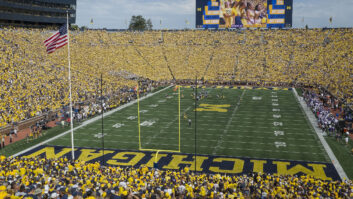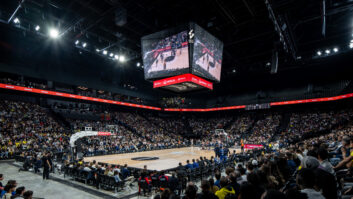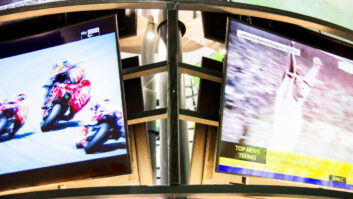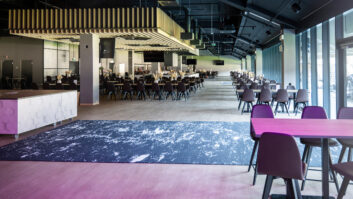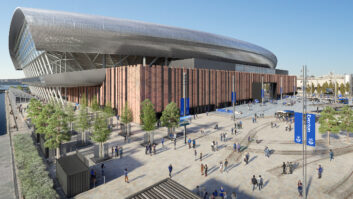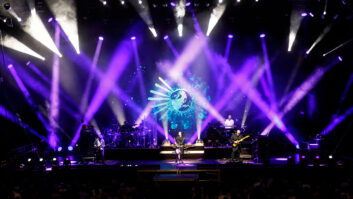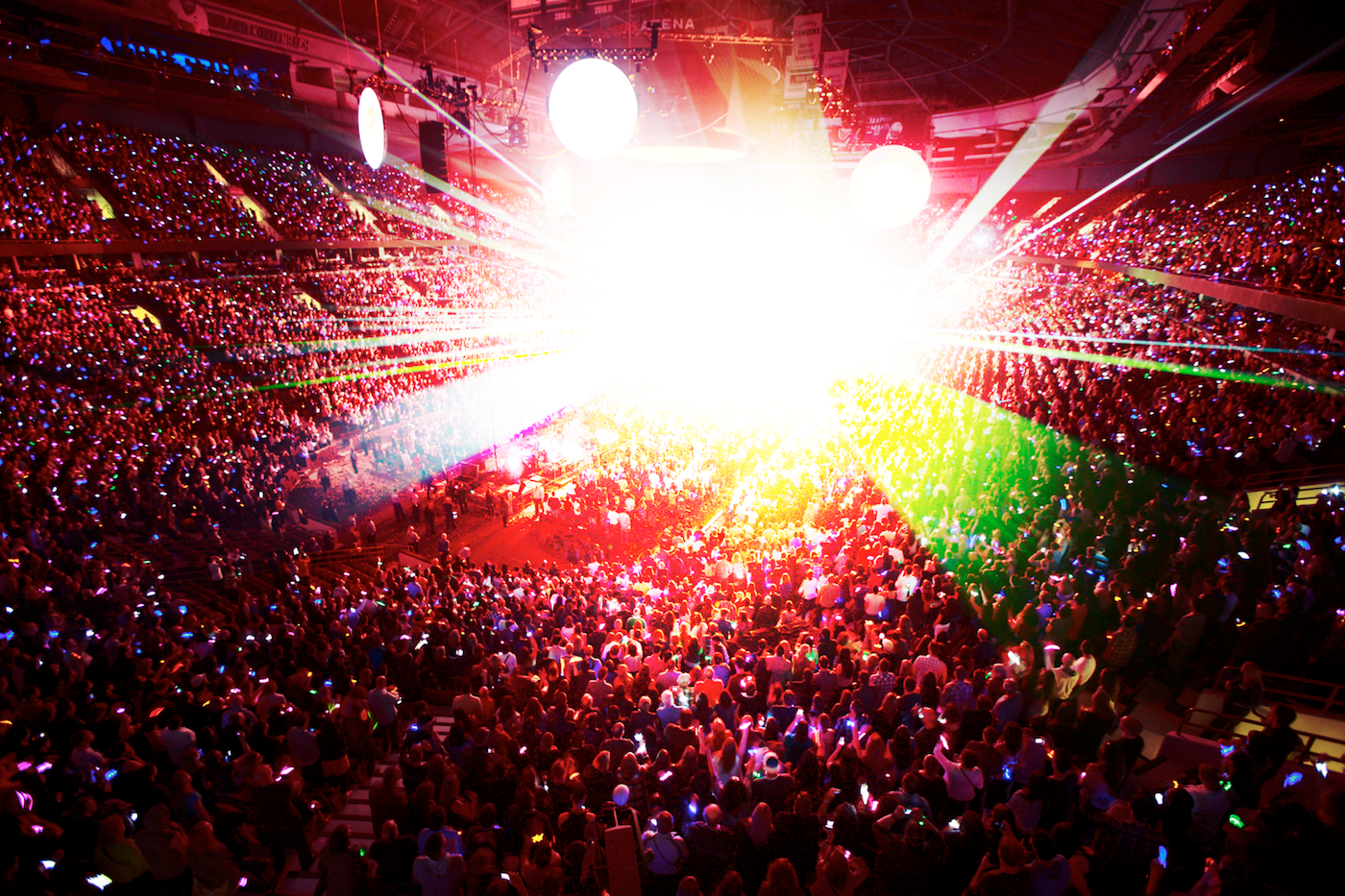
After revealing some of the benefits of converged AV and IT networks within stadiums, we looked at the infrastructure demands generated by these venues’ video and WiFi requirements. David Davies concludes by looking at the constraints of convergence and the recognised standards driving technology.
If more and more data is being run over a unified network, then one inevitable question is ‘which data types won’t join the convergence revolution?’ For Danny Barr, VP new product business development at ZeeVee, the most obvious candidates are point-of-sale and broadcast networks, where individual service providers’ impulse to maintain separate distribution in the interests of security may override any other considerations.
“I think the main reason for this comes down to security,” says Barr. “It is much less to do with reality/cost as it is generally well accepted that 10Gb (as a 10-year-old platform) is a lot more reliable and cost-effective than proprietary solutions. Many service providers within a stadium/live event venue are on standalone networks that never touch the core venue network – and I don’t see this changing in the short-term.”
However, there is “more acceptance” that at least one element which used to be run firmly on a standalone basis – namely, security cameras – can live on the same network as video and data. And whatever the future, the roll-out of fibre with 10Gb and even 40Gb infrastructures will mean that bandwidth isn’t going to be in short supply: “There is going to be plenty of available bandwidth to allow at least some of these additional networks to converge in the future.”
Optocore has had the ability to transport IT over its AV network technology since 2004, so can certainly be regarded as a convergence trailblazer. Marc Brunke, founder and general manager at Optocore, observes that “by using a proper synchronous AV network, you can easily transport an asynchronous IT network ‘on the side’.”
That’s not to say there aren’t legitimate reasons for keeping two separate networks – “mainly for security and maintenance. Security means that a virus doesn’t affect your AV performance. Maintenance means that the IT guys and the AV guys do not need to live on the same planet. Of course, it is up to the user/designer to select one or two different networks. We’ve seen both ways happen, and both for good reasons.”
Although opinions differ on the extent to which ‘true’ convergence will occur in the short- to mid-term, there is a widespread consensus that it will be fuelled by technology with support for recognised standards. It is this element that will arguably give project leaders the final boost in confidence to press ahead with these more complex network environments.
With reference to the philosophy whereby data is “converged or separate based upon logical decisions, rather than physical cabling”, Audinate regional manager of global support services Kieran Walsh points to Dante’s accommodation of standards-based ‘logical’ networking. “It uses UDP/IP at the transport layer, and this is predominantly UDP unicast IP for media payload,” he says. “Non-routable multicast address ranges are used for clocking (very low – borderline negligible) and user selected multicast media payload (default mode is unicast – there is no automatic multicast mode).
Furthermore, IGMP version 3 is implemented to allow multicast pruning where deemed necessary. Due to the time-critical nature of this service, DSCP is implemented. This short description contains all the information needed by a suitably qualified network architect to build a Dante network that can exist with any other IP-standards based data traffic.”
The need for standards-based technology should also be perceived in the context of a changing power structure within venue projects. Plenty would concur with Barr’s assertion that “IT decision-makers are now taking ownership of the entire infrastructure and they are only comfortable with solutions that can co-exist on standard equipment. Video distribution solutions must look and smell like IT, and most importantly behave like IT, to finally realise the dream of true convergence.”
As this implies, the meeting of AV and IT technology is only one part of the equation – one must also address the convergence of the respective personnel. Putting aside the issue of who has the greatest influence, it is now increasingly common for the AV and IT infrastructures to fall under the scope of the overall electrical contract for a venue upgrade – and consequently “consulting teams are engaging their AV and IT specialists at earlier stages”, notes Walsh.
This paves the way for multiple benefits, including “effective financial optimisation of a project” and “centralised purchasing to make the obvious cost-efficiencies inherent in that approach”. Walsh adds: “As AV consultants become more aware that their IT colleagues can assist in this process, and as both develop a mutual understanding of the other’s descriptions of technical requirements, system integration tenders can be managed to ensure capital expenditure and labour costs are assigned to the suppliers and contractors best placed to make the optimal use of resources.”
It is evident we are in a period of transition, and even when the lay of the land does become clearer there are obvious reasons for caution when planning such complex network environments. As Peter Rieck, key account & distribution manager from professional cable and connection technology specialist Sommer Cable, remarks: “High-grade infrastructure components like network switches for real-time audio and video applications – certainly not our cables! – are still rather expensive. This might be a possible reason for the distinction between real-time and timing-uncritical networking. Security aspects must always be heeded, no matter if we are dealing with one large network or several smaller ones. The bigger the network, the higher the efforts for the safety planning and administration will be.”
Nonetheless, it is clear that – to paraphrase Walsh’s terminology – convergence is increasingly moving from concept to reality. As fibre becomes more prevalent and the tools available to manage complex networks grow in sophistication, expect a unified approach to be adopted widely not just in world-status venues like stadiums – but also theatres, music venues, corporate facilities and many other kinds of installed environments.
